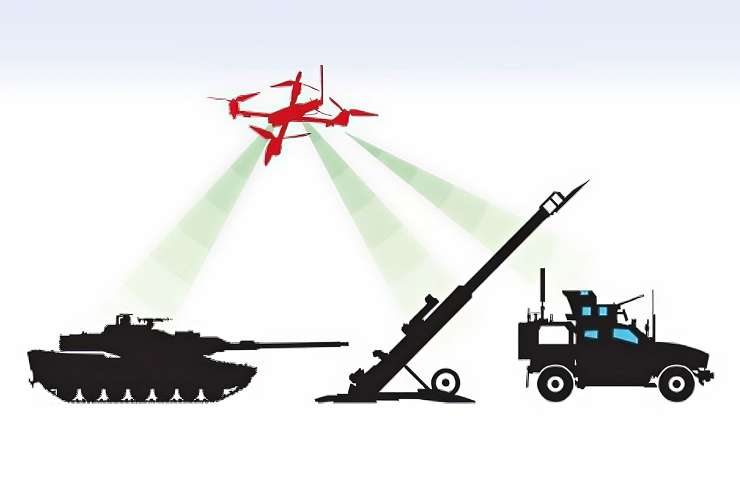In the frontlines of Donetsk, around the frisky forests of Luhansk, and even deep into enemy airspace, Ukraine’s FPV (First Person-View) drones have evolved from being a weapon to another set of eyes and hands for many soldiers. Since Russia’s full-scale invasion of Ukraine over two years ago, these small, inexpensive drones have transformed the way Ukraine pursues the war effort in Ukraine.
Soldiers began using racing drones purchased online and subsequently creatively attached explosive to the drones. Now, it has led to a complex, structured system of drone warfare. These FPV drones have changed not only how battles are fought, but also the nuances of modern warfare.
What is an FPV drone and why does it matter?
An FPV drone is different from a typical drone that is flown autonomously by a GPS vector. FPV drones are flown by a controller in real time, usually with goggles that will show a video of the front-mounted camera of the aircraft. FPV drones allow for: A precision target of moving and concealed enemy assets, Last minute corrections to a flight path and Agility and manoeuvrability in congested urban or wooded workspaces. These drones effectively make the operator a combatant at a distance part soldier and part gamer dropping ordnance through the hatches of tanks, into foxholes and bunkers and through the windows of buildings.
Ukraine achieved a historic milestone in 2024: over 96% of drones utilized by its military were domestically produced. From just a few thousand FPVs that were utilized in 2022, Ukraine produces now over 200,000 FPV drones per month, with a factory target of four million drones total produced by the end of 2025. This has been made possible via: A network of over 500 domestic drone manufacturers, Direct support and funding from the Ukrainian government’s “Army of Drones” initiative and Crowdfunded drone battalions and grassroots engineering cells repurposing civilian technology for military use.
FPVs are now significantly cheaper than they were just a few years ago. Costing between $300 – $800 per unit, FPVs are one of the cheapest ways to destroy multimillion-dollar military assets, including armored vehicles, artillery systems, or radar installations. One FPV drone can disable or destroy enemy armor at a ratio of almost 1:4,000. According to the Ministry of Digital Transformation in Ukraine, there are average monthly FPV drone strikes, sometimes multiple thousands of them. In the month of July 2025 alone, drone units claimed to have destroyed over 5,200 Russian targets, including tanks, BMPs, howitzers, and mobile radar.
Strategic impact of FPV:
Ukrainian officials have estimated that FPV drones currently account for as much as 70% of battlefield casualties on both sides. Additionally, FPV drone regiments such as Birds of Magyar and Achilles have reported destroying over 5,000 Russian targets in just a single month in 2024. Daily, we watch videos of FPV drones diving into trenches, cars, and even fleeing infantry, all with the operator skilfully controlling it. In some areas, Ukraine has developed what experts deem “drone buffer areas” swarms of flying, buzzing, loitering FPVs, that stop Russians from maneuvering troop movements and artillery, as if they created an air minefield.
FPV as a lifeline:
On August 5, 2025, near Siversk, the Rubizh Brigade rescued a wounded Ukrainian soldier by delivering an electric bike using an 88-pound FPV drone. The first two attempts failed—one due to overheating, the other was shot down—but the third trip succeeded. The soldier rode the bike for 400 meters, detonated a mine, crawled for 200 meters and was ultimately rescued when a second drone delivered another bike to him. The rescue was about $2,340 and succeeded where either helicopters or ground teams were unable to operate. Earlier, an FPV drone took blood for a field transfusion saving a soldier who had remained in a trench engaged in combat with enemy troops. These particular missions demonstrate how FPV drones are changing roles on the battlefield, transforming themselves from mere weapons into lifesaving tools for rescue and survival.
Global on FPV drones:
Ukraine’s FPV drone campaign is now taught in war colleges ranging from NATO headquarters in Brussels to Pentagon labs in Arlington. Western militaries are incorporating FPV-style drones into urban combat courses and training for special forces, previously cautious of low-tech counter-insurgency solutions. The U.S. Army’s Next Generation Combat Tech unit has even reverse-engineered Ukrainian drone tactics into simulated combat training for 2024. While Russia is now fielding its own FPV drone units, it clearly is behind the curve in innovation and scale. The FPV template is reportedly being adapted by Iran, China, and even Middle East non-state actors, raising fears of global proliferation of kamikaze drone tactics.
FPV drones have become a model to Ukraine’s ingenuity in using technology for survival and resistance. Although Ukraine faced limited weaponry and small numbers, they have found creative, cheap ways to turn the odds in their favour. i.e., FPV drones. FPV drones have quickly become part of any major battle. They have been relentlessly hitting tanks, scouting enemy positions, and, impressively, provide frontline aid that saves lives. More than just equipment, FPV drones show the difference innovation, bravery, and will can make in pursuing a war. Other prospective adversarial states look closely at their construction and use. Ukraine’s innovative use FPV drones may become the template for future warfare.

